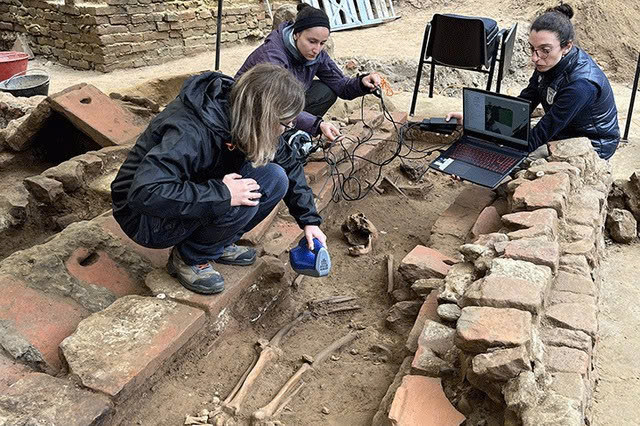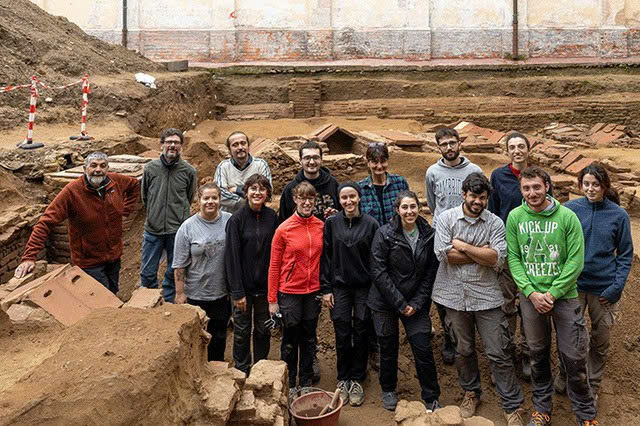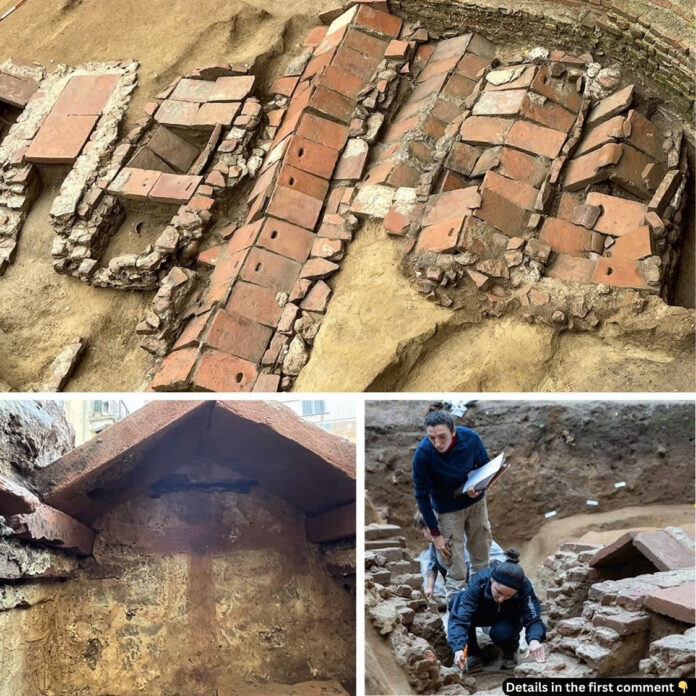Beneath the quiet courtyards of a 15th-century monastery in Pavia, Italy, archaeologists have made a discovery that rewrites our understanding of medieval European royalty. More than twenty ancient graves, some housed within elaborate stone chambers topped with decorative terracotta roofing, have emerged from centuries of obscurity to tell the story of the Lombard kingdom’s most elite families.
The Rise and Fall of Lombard Power in Northern Italy
From Invaders to Rulers

The year 568 marked a turning point in Italian history when King Alboin led his Germanic warriors across the Alps, forever changing the peninsula’s destiny. These Lombard forces swept through northern territories with remarkable speed, yet one city stood defiantly against their advance. Pavia’s formidable walls held firm for three grueling years before finally surrendering in 572, transforming from a Roman stronghold into the beating heart of a new kingdom that would endure for over two centuries.
Religious Transformation Under Royal Patronage

The Lombard court initially embraced Arianism, a Christian doctrine that put them at odds with papal authority. This religious divide began to heal during the mid-7th century under King Aripert I’s leadership (653-661), who orchestrated a kingdom-wide conversion to Catholicism. His most enduring legacy came in 657 with the construction of the first royal burial ground at what would become the Basilica of Santissimo Salvatore, establishing a sacred tradition that lasted until the early 8th century.
A Treasure Trove Emerges from Medieval Soil
Modern Technology Meets Ancient History

The excavation began with a simple parish request to explore rumored burials beneath their monastery grounds. Armed with sophisticated geophysical equipment, researchers pinpointed promising locations in the cloister’s southern section. Between September and October 2024, their patience was rewarded as burial after burial came to light, each one more spectacular than the last.
Architectural Marvels of the Afterlife

The most impressive discoveries were stone sarcophagi crowned with carefully crafted terracotta tiles, arranged in both flat and peaked configurations reminiscent of miniature houses for the deceased. One particularly ancient burial chamber bore a vivid red cross painted across its surface, serving as a powerful symbol of the era’s Christian identity. Dating to the 7th century, these elaborate tombs clearly marked the final resting places of Lombard nobility and their closest courtiers.
Scientific Innovation Brings the Past to Life
Cutting-Edge Documentation Methods

This excavation represented a masterclass in modern archaeological methodology. Unmanned aerial vehicles captured comprehensive site overviews, while advanced 3D imaging technology created detailed digital records of each discovery. Every skeletal fragment was carefully digitized, ensuring that future researchers will have access to precise measurements and visual documentation for decades to come.
Training the Next Generation

University students specializing in archaeology and cultural preservation played integral roles throughout the dig. Based on their skill levels, participants took on responsibilities ranging from basic site recording to the delicate extraction of fragile artifacts. This hands-on educational approach not only enriched academic learning but also contributed valuable workforce hours to the research effort.
Unlocking Biological and Cultural Mysteries
Scientific Analysis Reveals Hidden Stories
Laboratory examination of the recovered remains promises to unlock secrets about Lombard society that written records cannot provide. Isotope analysis will reveal dietary patterns and geographic origins, while DNA sequencing may establish family relationships among the buried individuals. International collaboration with German research facilities will help determine connections between these Italian nobles and their Northern European cousins found in other Lombard burial sites.
Social Hierarchy Written in Stone
The cemetery’s organization tells a clear story of medieval social stratification. The most elaborate tombs occupied prime positions, decorated with status symbols that proclaimed their occupants’ elevated rank. Over time, simpler graves appeared above these royal burials, likely belonging to medieval monks who later established a religious community on this hallowed ground.
Broader Significance for Medieval European Studies
Daily Life of Medieval Elites

Beyond their historical importance, these skeletal remains offer intimate glimpses into Lombard daily existence. Evidence of physical labor patterns and nutritional habits helps reconstruct the activities and health conditions of medieval aristocrats. The gradual adoption of Catholic burial customs reflects the broader cultural evolution that transformed Lombard society during this pivotal period.
Pavia’s Strategic Medieval Importance

These findings underscore Pavia’s crucial role as a medieval power center. The city’s advantageous position made it a natural hub for commerce and political administration, while its surviving architecture demonstrates how Lombard culture successfully blended Germanic traditions with inherited Roman practices.
Video
Looking Toward Future Discoveries
Continued Excavation Plans
The project’s next phase, scheduled for 2025, will focus on the cloister’s northern section, where researchers anticipate uncovering additional royal burials. Ongoing laboratory analysis of existing remains will provide deeper insights into the social rankings, health status, and lifestyle patterns of those interred in this royal cemetery.
Interdisciplinary Research Approaches

This project exemplifies the power of collaborative scientific investigation. By combining historical documentation, anthropological expertise, and genetic analysis, researchers are constructing an unprecedented comprehensive portrait of Lombard civilization and its influence on medieval European development.
A Window into Europe’s Medieval Past

The emergence of these Lombard royal tombs from beneath Pavia’s ancient monastery floors represents far more than an archaeological success story. These discoveries provide an invaluable opportunity to understand the beliefs, social structures, and daily realities of one of medieval Europe’s most significant kingdoms. As scientific analysis continues, each revelation helps illuminate the complex cultural transformatio

